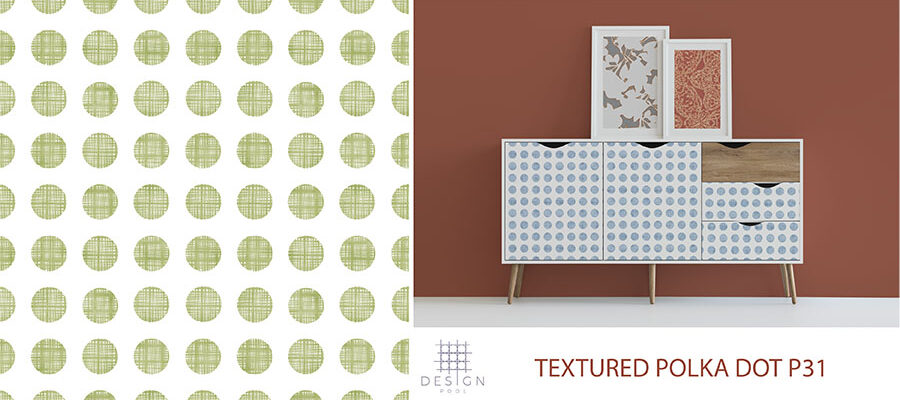
Polka Dot Definition and Designs
It is safe to assume, that nearly everyone has had a polka dot pattern in their clothes or linen closet at some point in their life. It seems from the first time this pattern made an appearance, it has always been on trend in one form or another.
Polka dots are fairly recent in the scope of textile history. Medieval Europeans had no interest in dots. Without machines promising perfectly spaced dots, irregularly spaced dots were too reminiscent of diseases such as smallpox or measles. It wasn’t until after the industrial revolution that new technology made it easier to space dots precisely.
So, where did the polka dot get its name? According to Susan Meller in her classic book Textile Designs, “It takes its name from a Bohemian folk dance, first performed in Prague in 1837 and brought to Paris by 1840; by 1845 the polka had spread to England, the United States, and even India. It became such a craze that numerous consumables were named after it – puddings, hats, fishing lures, drapery arrangements, dot patterns – in the hope that they would share its popularity.”
Other product designers were smart to want in on the action since it had been a popular design for nearly two centuries. Suddenly all kinds of products had dots, and the 1960’s hit, Itsy-Bitsy Teenie-Weenie Yellow Polka-Dot Bikini by Brian Hyland, gave a new generation of fashion icons a love for the whimsical pattern.
Meller goes on to say, “To a print designer, the difference between the polka dot and the circle is that circles contain some internal motif, or are empty outlines; the polka dot is a round of solid color. And unlike the solid dots in the dot pattern, which are used as the elements of some other motif, the polka dot is arranged in random or set-layouts.”
Here at Design Pool, we are huge fans of these patterns. They’re timeless and look great in almost any environment. Check out all of our interpretations!
Sources:
Textile Designs: Two Hundred Years of European and American Patterns Organized by Motif, Style, Color, Layout, and Period, Susan Meller and Joost Elffers
Share this post
Author
DESIGN/COLOR TRENDS AND AWESOME INFORMATION IN YOUR INBOX
Sign up for our monthly trend letter







